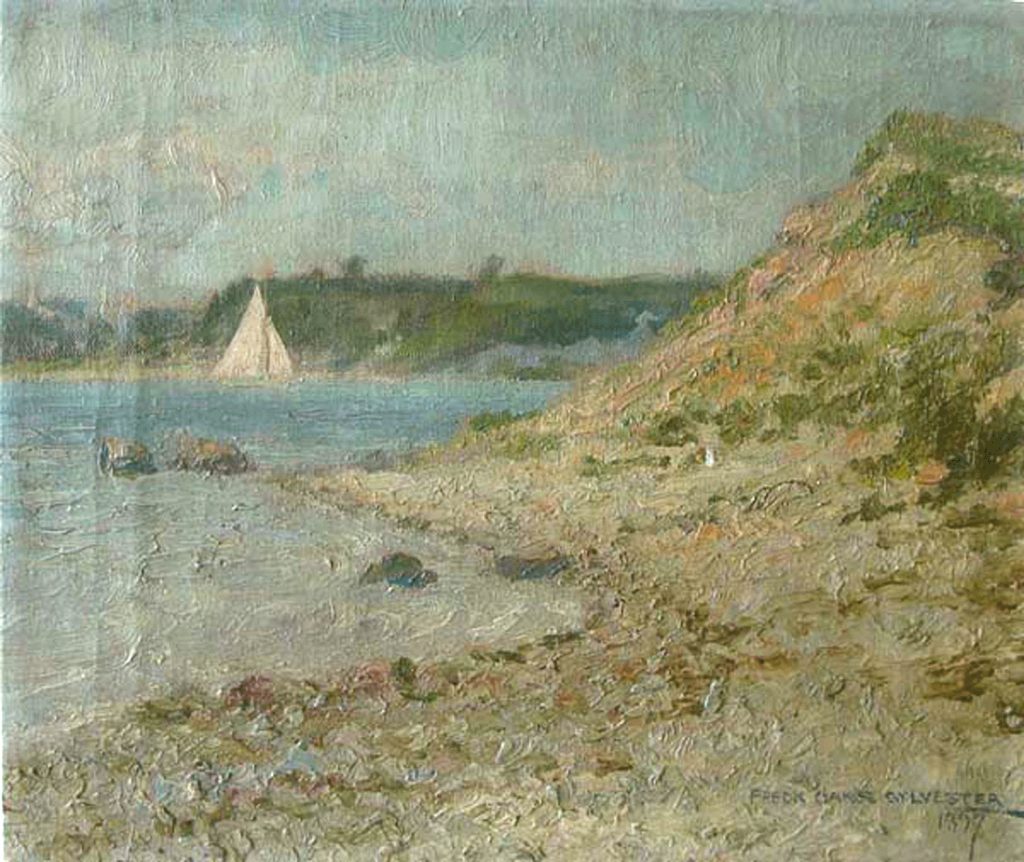The artist and poet, Frederick Oakes Sylvester, was born in Massachusetts in 1869. In 1888, determined to be an art teacher, he entered the renowned Massachusetts Normal Art School in Boston and graduated with honors in three years rather than the typical five years of study. Armed with his degree, Sylvester taught painting and drawing at Newcomb College at Tulane University in New Orleans for one year. In 1892, he and his wife moved to St. Louis when he was hired as art director at the new Central High School and where the family within seven years included a daughter and a son. Sylvester taught at Central High School until 1913. In 1901, he took on an after-school second job as art director of The Principia, a three-year-old private school in St. Louis, where he taught for 14 years.
In 1902, Sylvester purchased a warm-weather cottage on the bluffs above the Mississippi River village of Elsah, Illinois, north of St. Louis, with scenic views of the river and limestone bluffs. This is a seminal event in his artistic life because within a few years, the subject of his painting changed from the urban and gritty St. Louis riverfront and the Eads Bridge to the bucolic nature scenes and vistas around rural Elsah. The paintings from his Elsah period place Sylvester squarely in the Tonalist movement; yet no Tonalist used blue as a predominate color to such advantage as Sylvester.
Sylvester died in 1915 at age 45; however, his legacy has been preserved by The Principia, which has the largest collection of his works. Starting in 1910, he invited Principia art students to his cottage for a day of sketching and painting. One of those students was the son of the school’s founder and it is said that when The Principia was looking for a location for a new college campus, that student recalled his time with Sylvester on the bluffs above Elsah and suggested The Principia look there. Today, Principia College’s campus includes the site of Sylvester’s cottage and one of its dormitories is named in his honor.

